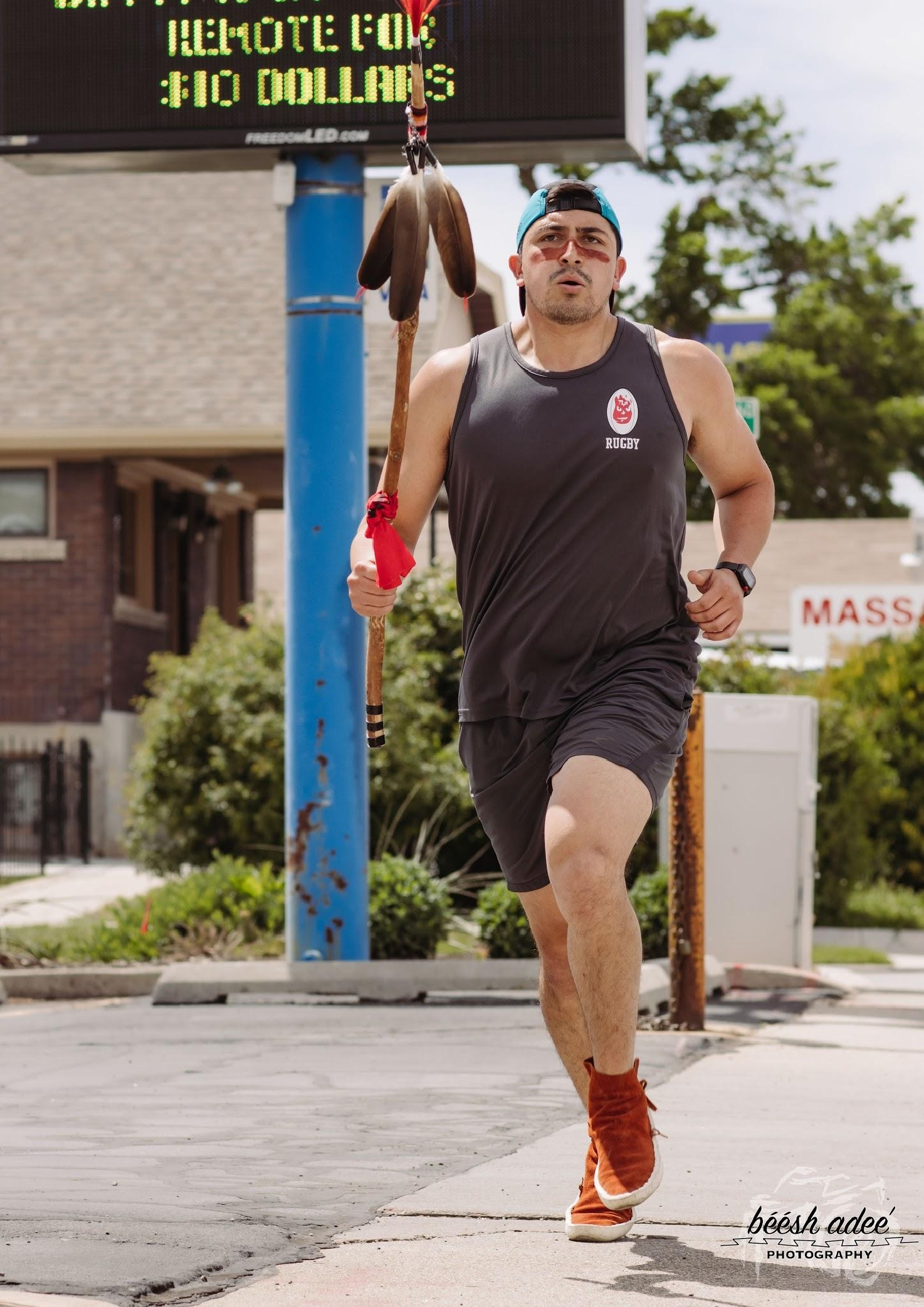Some information may be outdated.
Their feet hit the ground before sunrise—whatever edge they could get to beat the heat. After being led in prayer by an elder, ten Indigenous runners began a five-day, 360-mile journey from Bears Ears National Monument in San Juan County to Warm Springs Park in Salt Lake City. Along the way, they would pass through Monticello, Moab, Price and Provo.
The second annual Running as Medicine Indigenous Youth Prayer Run happened from May 18 through 22 this year. The goal of this year’s run was to promote global healing, addressing stress caused by the pandemic as well as strengthening the relationships between the Indigenous communities and residents of Utah.
Participants in the Prayer Run were from throughout the country, ranging from North and South Dakota to Michigan, Ohio and Arizona. Not only were there Navajo runners but there were also individuals from the Lakota and Yurok tribes.
“It takes me back to when I was a young child,” Linda Jim said. “I was taught, ‘Don’t be lazy. Get out and run. Go greet the sun.’”
Jim, who goes by LJ, is from the Diné/Navajo tribe and is the board chair and treasurer for the nonprofit SLC Air Protectors, a nonprofit based out of Salt Lake City that sponsors the event. The environmental group was founded in 2017 and advocates for Native American stewardship of land, water, and air.
Last year, the runners began as the COVID-19 pandemic hit the Navajo Nation especially hard. LJ said that running through the land felt complicated and the toll of the pandemic became apparent—especially when the virus was affecting close relatives of the runners.
“It was hard on everyone,” LJ said. “At one point we reached the summit where you come into Spanish Fork Canyon, and one of the runners received news that her uncle had been taken to the hospital.”
The runners knew what they would do, she said. They would maintain their stride, push past the discomfort and worry and run alongside each other in prayer. It was the only thing they knew in their hearts they could do.
“There was a purpose there,” LJ said. “And I think once you have a purpose, you know, you can pretty much focus.”
Navajo tribal member Michael Charles has been pursuing a purpose for the majority of his life. He is currently working toward his PhD in chemical engineering at Ohio State University. Running became a part of Charles’ life as soon as he was old enough for his family to find him somewhat of a nuisance, he said.
“It started off as kind of like a punishment for having too much energy in the house,” Charles said. “My mom would send me out: ‘Go run to this spot and back.’ I didn’t realize it wasn’t normal for people as young as I was to run that far.”
Charles has participated in running events such as the Spartan Race and Warrior Dash and though he would describe himself as competitive, he understands that this run served a much different purpose.
“We’re not out here to run fast,” Charles said. “We’re here as a ceremony; we’re here to look after each other; we’re here to take care of each other.”
As the team made their way through various cities, organizers tapped in to run if a runner needed a break. Residents, too, were urged to jog along if they felt so inclined; it was a valuable way to show their support and help out anyone who needed an extra push. The Prayer Run hoped to motivate the younger generations to find joy in movement.
“My grandbaby will actually finish the run, and she’s only four,” LJ said. “All the runners will slow down and she will carry the medicine.”
The known death toll from COVID-19 on the Navajo Nation stands at 1,301 as of May 25. However, the Navajo Nation has outpaced every state in the race to vaccinate its citizens. With 103,574 individuals receiving their second shot as of May 25, over 60% of the tribal land’s population of roughly 170,000 are fully vaccinated.
This improvement has offered a greater sense of optimism than last year’s Prayer Run, as the state of the world seems to inch back to what normal used to be. The mere act of running in itself represents a steady progression.
“The idea is running forward and the hope of leaving some of what happened last year behind and trying to really heal ourselves,” Charles said.
The runners and organizers made it to Moab on Wednesday, May 19, and enjoyed a lunch hosted in their honor by local Indigenous nonprofit Full Circle Intertribal Center on the patio of the Moab Arts and Recreation Center.
The runners’ exhaustion was palpable, but so was their joy — more than enough to push on those next hundred miles.
Appreciate the coverage? Help keep local news alive.
Chip in to support the Moab Sun News.





